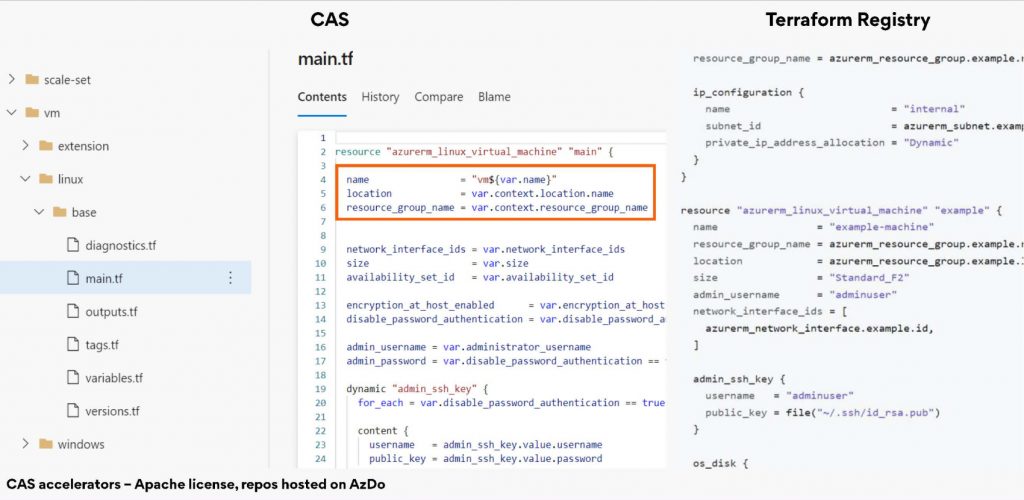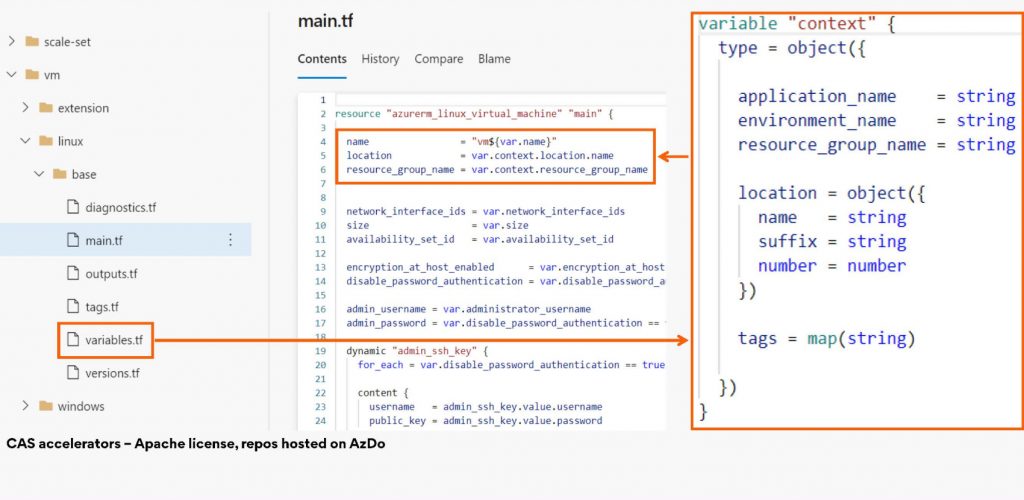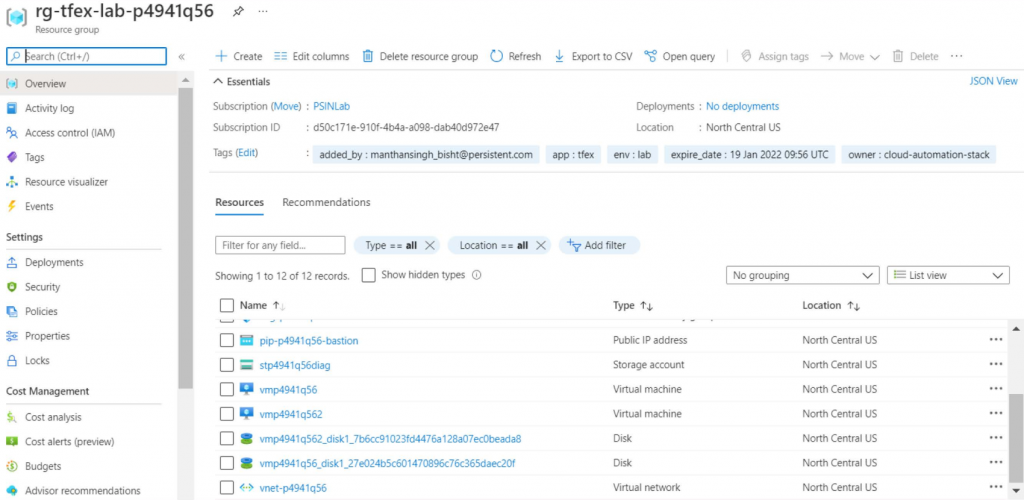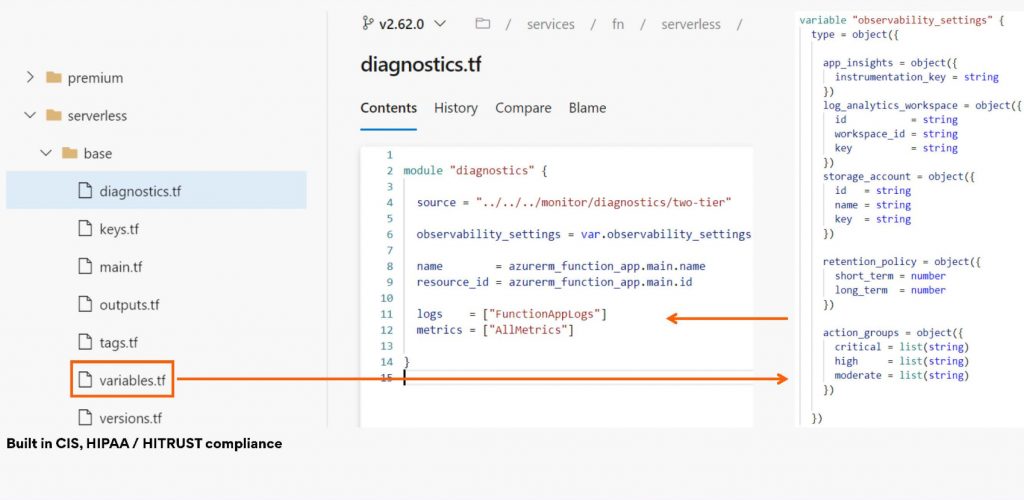When it comes to cloud adaptation for hybrid or multi-cloud environments, enterprises often face challenges related to regulatory compliance, data security & integrity, time & technology management, vendor lock-in, development cost over-runs, etc. Apart from this, there is an on-going requirement of infra-availability, reliability & scalability and technically trained cloud workforce. To counter these challenges and help you build evolved cloud environments faster & at scale, Persistent’s Cloud Automation Stack (CAS) offers Building blocks for accelerating cloud infrastructure development.
In our previous blog, we explored how the Cloud Automation Stack accelerators enable our clients to quickly, seamlessly and cost effectively adapt to the cloud. In this blog, we will walk you through the actual cloud adaptation journey, the overall value that we deliver to our clients and the key advantages of our Cloud Automation Stack artifacts. Also, we encourage you to explore our CAS Repo links, provided at the end of this blog!
Four Stages of the Cloud Adaptation Journey
Typically, a cloud adaption journey has four stages, read on to know more in detail.
Stage #1 – Discovery
The first stage is ‘Discovery’, where the enterprise has an on-prem application deployment that is possibly too expensive to maintain, difficult to scale up or be globally available. At this stage, the client begins technical introspection and starts assessing capabilities of potential cloud providers, they can choose to partner with.
Stage #2 – Cloud Migration
After finalizing the cloud partner, the clients move to stage two known as ‘Cloud Migration’. At this stage, they work on replicating on-prem infrastructure on the cloud. This is followed by application lift and shift to the newly created cloud infrastructure. However, they soon find out that though this step has given them scalability and reliability, the running cost of the underlying infrastructure is still quite high. So, to optimize the performance further, clients move to stage three.
Stage #3 – Cloud Optimization
In the third stage, enterprises start tweaking the already created cloud infrastructure to optimize it for scalability, performance, op-ex and availability. This stage is referred to as ‘Cloud Optimization’. However, even at this stage there is much that needs to be done! To become truly efficient, ‘born in the cloud’ approach needs to be adapted for application deployment.
Stage #4 – Cloud Modernization
This next stage i.e., stage four is called ‘Cloud Modernization’. At this stage, the client revamps underlying infrastructure by recreating architectures using cloud native services. Post this stage, the desired level of cloud scalability, reliability, and availability along with optimized op-ex & governance is achieved.
Our Value Proposition
As you can observe from the four stages, the entire cloud adaptation journey is very cumbersome and resource-intensive in terms of labor, time and cost.
This is where CAS accelerators step up to make our client’s job easier. Currently, CAS has ready to use, well maintained, open-source accelerators available for AWS, Azure and GCP clouds that can be quickly adapted to churn out desired cloud infrastructure.
Although work is in progress to provide tools for undertaking stage 1 of the cloud journey, we have 150+ artifacts that are ‘ready to use’ for stages 2, 3 and 4.
Key Differentiators of Cloud Automation Stack Accelerators
Our accelerators have a number of advantages over what is available on Terraform Registry and other open-source repos.
Here are our key differentiators:
- Building block-like architecture pattern – CIS/HIPAA/HITRUST compliant blocks that plug into each other to build customized solutions
- In-built features for governance and observability
- Standardized, maintainable and manageable artifacts – hundreds of blocks built, maintained and updated by a single team v/s open-source repos with a number of services developed by hundreds of developers with several different implementations
- Terraform-based artifacts that enable multi-cloud architectures
- Team member support for artifact implementation
Business Benefits of Cloud Automation Stack Artifacts
- Simple Building Block-like Architecture:
Figure 1: Shows that basic service blocks (bottom level) can be assembled to form higher level scenarios (middle level) and full cloud infrastructure solutions (top level). For example, the Observability stack scenario (middle level) is made up of basic building blocks such as S3 bucket, CloudWatch log group, etc.(bottom level). Scenario blocks like Observability stack, Centralized logging, etc. (middle level) can be put together to create a full cloud governance solution (top level). - Enhanced Governance and Observability:
Figure 2.1 – Shows a CAS Terraform accelerator for Azure VM v/s what is typically available on Terraform Registry. The highlighted square shows the context object. Figure 2.2 – Shows context object, the key parameters such as application, environment and resource group names along with tags are defined only once in the Terraform code. This context object is passed to all the different CAS artifacts that have been used in building the full solution. As against this, conventional accelerators present on Terraform Registry need these parameters to be hard coded, every time a new module is used. Thus, our artifacts reduce programming overheads. Figure 2.3 – Shows the deployed resource getting tracked using tags via the resource monitor. Figure 2.4 – Shows an excerpt of CAS accelerator with unique built-in logging settings. These can be used to analyze and improve infrastructure performance.
CAS Repos – Explore our Reference code, Self-learn & Follow the Best Practices
Here are our CAS Repo links for you to experiment:
| CAS – AWS Artifact Repo | aws – Repos (azure.com) |
| CAS – Azure Artifact Repo | azure – Repos |
| CAS – GCP Artifact Repo | gcp – Repos (azure.com) |
| CAS – Machine Images Repo (Private) | machine-images – Repos (azure.com) |
At Persistent’s Cloud Automation Stack, we ensure that your cloud journey is seamless & scalable. Our Cloud Automation Stack accelerators not only save your valuable development time but also minimize the cost required to deploy cloud infrastructure. In addition to this, our accelerators also simplify infrastructure maintenance and upgrade for you. To learn more about our Cloud Automation Stack’s customizable accelerators & offerings for your hybrid and multi-cloud requirements, connect with us at: cloud-automation-stack@persistent.com

